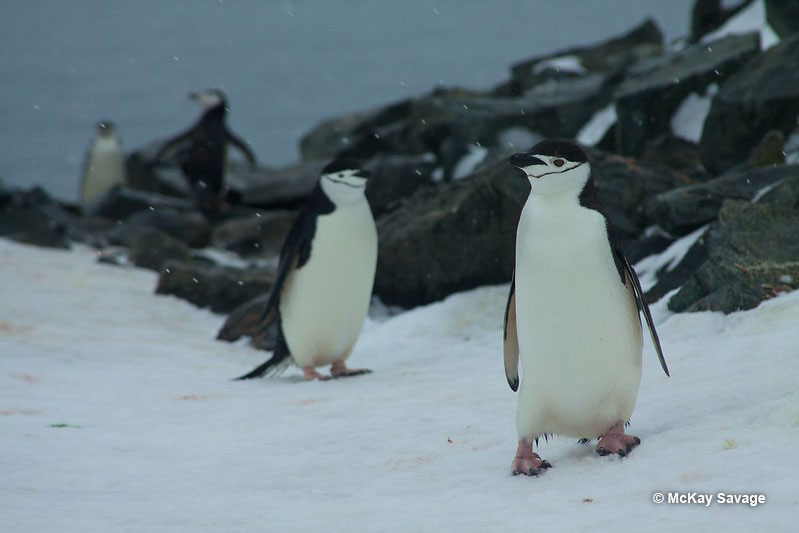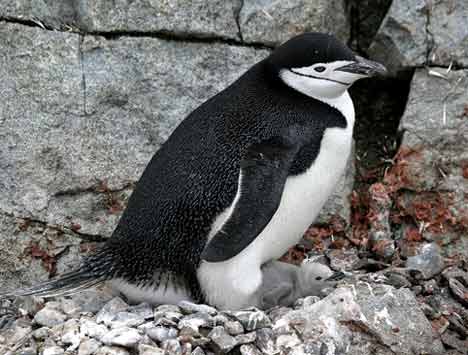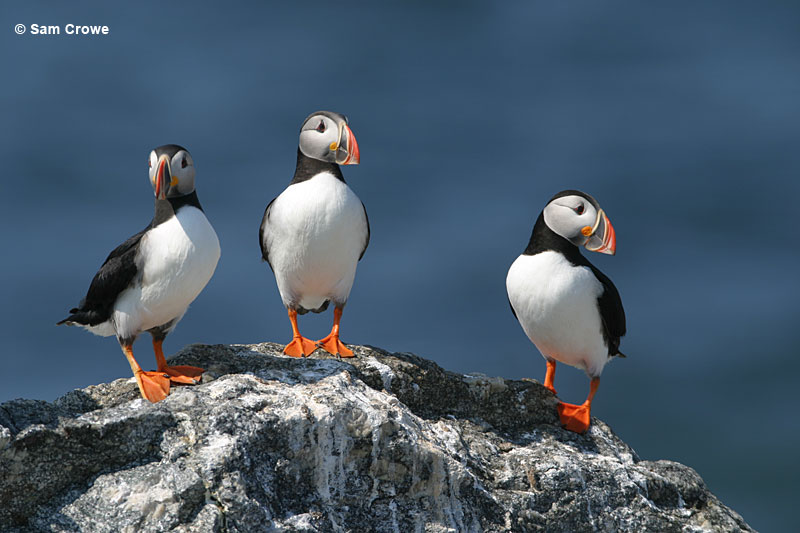
Penguins, the famous avian tuxedo-wearers of the Southern Hemisphere, have long been subjects of infatuation and special affection among bird enthusiasts. Not less important, these flightless birds are also cherished pop culture heroes.
Popular culture has bred one particular and seemingly eternal dilemma – it is about penguin knees.
The question of whether penguins have knees has been listed as one of the strangest things people look up online and dubbed one of the “Life’s biggest questions” on the YouTube channel of the same name.
So, what’s the answer?
Luckily, we don’t have to look at X-rays now – biologists have already figured it all out for us.
On this page
Do Penguins Have Knees?
Contrary to popular belief, penguins do have knees. However, their knee joints are not as visible due to their distinct morphology.

The misconception that penguins don’t have knees stems from two simple facts. First, it’s because the knees are not visible from the outside.
Related: What is a group of penguins called?
Secondly, humans can impersonate the penguin waddle if they lock their knees. The combination made many conclude that penguins must lack knees.
If only things were that simple.
Penguin Modified Leg Structure
Penguins’ legs are shorter and more muscular when compared to many other bird species. However, they’re still much longer than they look from the outside.
A penguin’s leg consists of a short femur, knee joint, kneecap, fibula, and tibiotarsus, which is surprisingly similar to the human leg structure. However, the proportions are dramatically different.
The penguin’s knees are located much higher than you would expect them to be. And, not only are the feet and the lower leg snuggled below feathers and skin, but the penguins’ knees are handsomely tucked below the skin, inside of their bodies.

As you probably concluded, the confusion about penguins’ knees arises because the legs are mostly hidden from view. This strange anatomy gives penguins an incaurately short-legged impression.
However, it has its purpose. Having knees tucked inside helps their hydrodynamics; they can swim faster due to that distinguishing rocket-like figure.
The Secret of the Penguin Waddle
Penguins’ legs are adapted for life in the water, making them exceptional swimmers but clumsy-looking on land. While the legs graciously move in the water and help penguins steer their bodies with the help of their webbed feet, they seem inefficient for moving on the ground. But is that really so?
To move quickly, penguins have to use the less efficient fast-twitch muscle fibers. However, no matter how it looks to observers, the actual measurements say that penguin waddling is a highly efficient way of moving on ice.
Scientists calculated that the characteristic side-to-side moving manner helps them save energy while walking. Other similar-sized animals must use twice as much energy to cover the same distance.
How Different Are Penguins From Other Birds?
Due to their marine-based, water-gravitating lifestyle, penguins have a series of adaptations that make them completely different from most birds. Knees are just one of them.
Related: Are penguins birds?
Besides the modified leg anatomy, other body modifications make penguins apart from other birds.
- Penguins’ wings are modified into flipper-like structures.
- Penguins have large bellies to create food reserves for prolonged periods.
- Penguins can’t float on water because they lack air sacks inside of their bodies.
Importantly, because of all the reasons listed, penguins are flightless birds.

When it comes to looking like penguins, Puffins are the closest match, but they live in the Northern Hemisphere.
Fun Facts About Penguins
- All penguins live exclusively in the Southern Hemisphere. Although the Northern Hemisphere has some similar-looking birds, like Puffins, they are not closely related to penguins.
- There are 18 extant (existing, non-extinct) species of penguins, each featuring unique looks, traits, and adaptations to their environments.
- Penguins are exceptional swimmers, with the fastest species, the Gentoo (Pygoscelis papua), reaching up to 22 miles per hour!
- While many penguins are associated with icy landscapes like in Antarctica (and that’s how we envision them), some species inhabit warmer regions, including Southern Argentina, New Zealand, and the Galápagos Islands.
- No matter where they live, penguins are always surrounded by seawater and live what you could call an amphibious lifestyle. The penguins are estimated to spend 75-80 percent of their lives in the water!
- The trademark black back-white belly penguin coloration isn’t a fashion statement – it’s a survival feature. When swimming on the sea surface, the dark back makes them hard to spot from above. The same goes for the light belly when you look from below, under the water.
- Many penguin species engage in lovely courtship displays that include gift-giving and synchronized movements – “dances.” It looks very adorable because it all seems so “clumsy” due to their specific gait.
- Both penguin parents take turns incubating eggs and caring for chicks, showing a remarkable division of parental duties. What makes them specific is the fact that one parent is absent for months while hunting out in the sea. In all that time, the other parent takes care of both himself and the egg or the chick.
- Male King Penguins can hold undigested food in their stomach for as long as three weeks, allowing penguin dads to feed their babies long after their long fishing expedition has ended.
Frequently Asked Questions
Why Do Penguins Waddle If They Have Knees?
Penguins waddle due to their unique leg structure and body adaptations for life in the water. The short, stout legs, combined with the high knee placement, make walking on land awkward compared to their sleek movements underwater. Yet, although it may seem impractical, waddling motion actually helps penguins maintain balance and conserve energy. It is a funny-looking but efficient way of traveling on both land and ice.
Do Penguins’ Knees Bend?
Yes, penguins’ knees bend. Despite being tucked in their bodies, they are fully functional, despite not as visible as in other birds. Penguins’ knee joints are flexible and allow for walking, swimming, and other movements crucial to their survival.
Conclusion
Like they weren’t strange enough already, the penguins’ intriguing leg anatomy adds an extra layer of oddity to these flightless birds. Their distinct waddle and peculiar anatomy led almost everyone to believe that they lacked knees.
However, despite being hidden from views, the penguins’ knees are just fine and doing everything knees should do. Their mobility allows penguins to gracefully swim and steer through water.
Oh, and that “clumsy” waddle? It turns out it’s a much more energy-efficient way to walk on tricky, slippery terrain than many others, seemingly more elegant ones. Take that, normies!

Ashley S. Boone
Tuesday 26th of March 2024
Thank you for the amazing blog post!